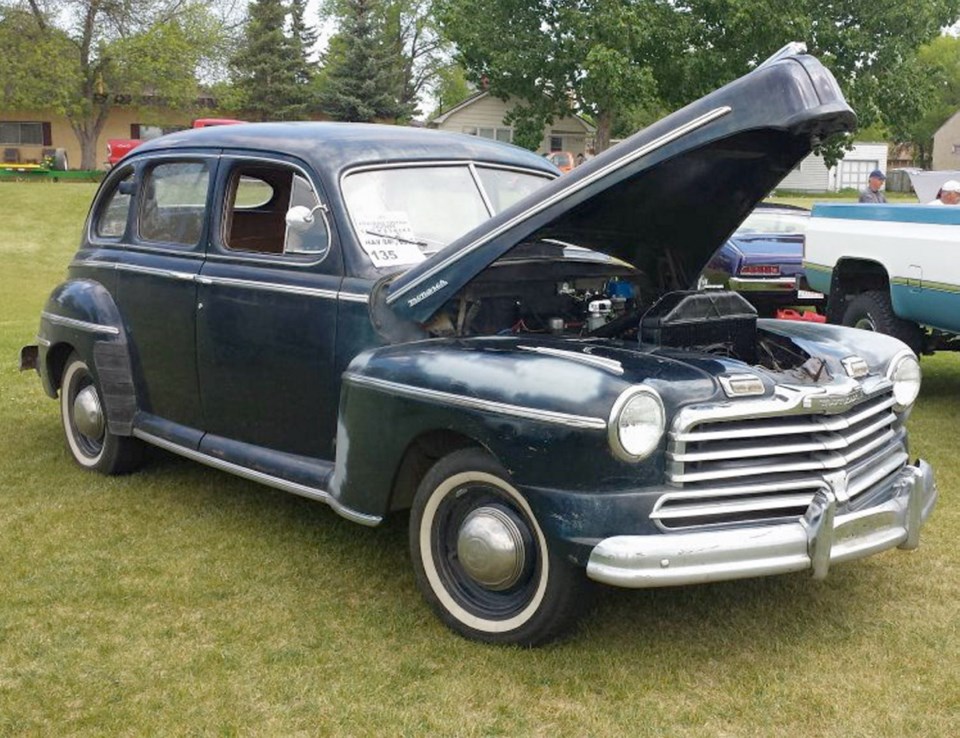The Monarch (and cars such as Pontiac’s Acadian and Ford’s Frontenac and Meteor) was a cloned Canadian model created to accommodate sa���ʴ�ý’s smaller dealership structure. While the American market could support standalone, one-marque franchises, lower population made it necessary to bundle several together in sa���ʴ�ý.
Traditionally, Ford dealers had sold Fords and an occasional Lincoln. With the introduction of Mercury in 1939, some dealers also sold Mercurys.
Starting in the mid-1940s, the Ford Motor Co. of sa���ʴ�ý established one group to sell Fords and Ford trucks and tractors and another to sell Mercurys, Lincolns and Mercury trucks.
This left Ford dealers without a mid-market car, so in 1946, Ford introduced the Monarch to fill that gap. The Monarch was a Mercury clone with just enough differences to build a following of its own. It used the same 2,997-millimetre wheelbase as the “senior” Mercury, not “junior” Mercury’s 2,896 mm.
Distinguishing Monarch features were a horizontal three-bar grille replacing Mercury’s vertical bars, a lion’s head ornament and a lion on each hubcap. It had a Monarch nameplate on the trunk lid, different placement of chrome strips and Ford taillamps. Inside was a Ford instrument panel with a lion embossed into the horn button.
Power came from Mercury ‘s 3.9-litre (239 cu. in.) side-valve V-8 engine mated to a three-speed, column-shifted transmission. Horsepower was quoted as 97, compared with the Mercury’s 100. Underneath was the same transverse leaf spring suspension and solid front axle used on Fords and Mercurys.
Monarchs came as a two- and four-door sedan with rear-hinged rear “suicide doors,” club coupe, convertible and woody four-door wagon. The four-door sedan was the most popular.
There was no change in Monarchs for 1947 except discontinuance of the two-door sedan. They also remained unchanged for 1948, although body choice was again reduced by eliminating the convertible and station wagon.
A big change came in 1949, when the completely redesigned Mercury evolved from being a “deluxe Ford” to a “junior Lincoln.” It shared its longer, lower, wider “inverted bathtub” body shell with the small Lincoln. The Monarch had a distinctive bolder grille, “leaping lion” hood ornament and Mercury taillamps.
The engine went up to 4.2 litres (255 cu. in.) and 110 horsepower, thanks to a 25-mm stroke increase. Optional overdrive gave quieter, more economical cruising. Front suspension was finally independent with A-arms and coil springs in front and longitudinal rear leaf springs with a beam axle, all supported by a sturdy X-braced frame.
After trim changes only for 1950, 1951 brought a new, heavier grille and an automatic transmission became optional.
In 1952, there was another complete restyling, with the Mercury/Monarch getting a more angular appearance featuring a massive integrated bumper-grille. A one-piece windshield arrived, and a slim-pillared coupe gave the “hardtop convertible” appearance then popular. Suicide doors were gone, and higher compression increased horsepower to 125.
Only trim and grille appearance changes marked 1953, although power brakes, steering and windows were now available. A big mechanical advancement came in 1954 with replacement of the old flathead engine with a new, short-stroke, overhead-valve 161-horsepower 4.2-litre (256 cu. in.) V-8.
Another restyling came in 1955, when Monarchs became longer, lower and wider and got a wraparound windshield. Displacement was increased to 4.8 litres (292 cu. in.), pushing power to 188. An optional, higher-compression 198-horsepower rating was available with the automatic transmission.
Those were horsepower race days, so for 1956, the Monarch’s engine went to 5.1 litres (312 cu. in.) and 210 to 225 horsepower, depending on model and transmission.
Another restyling came in 1957, featuring sculpted rear fenders. Again, trim differentiated the Monarch from the Mercury, although the two were beginning to converge in appearance. There were two engines, a 6.3-litre (383 cu. in.) 280-horsepower, and a 7.2-litre (438 cu. in.) 345-horsepower version.
With the introduction of the strongly promoted but ill-fated Edsel for 1958, Ford of sa���ʴ�ý discontinued the Monarch. But when Edsel sales proved disappointing, the Monarch triumphed by being brought back as the bigger-than-ever Monarch II for 1959.
New, rounder styling came in 1960, and then for 1961 the Monarch was reduced in size and model lines were reduced to three. This would be the last year for the original Monarch. Ford decided to push its Ford line up in size and price, in effect to where Monarch had been.
Except for a short revival in the 1970s as the Mercury Monarch, the Monarch name went into history. While now largely forgotten, the Monarch played an important role in Ford of sa���ʴ�ý history when it needed a mid-range car to balance its dealerships.



